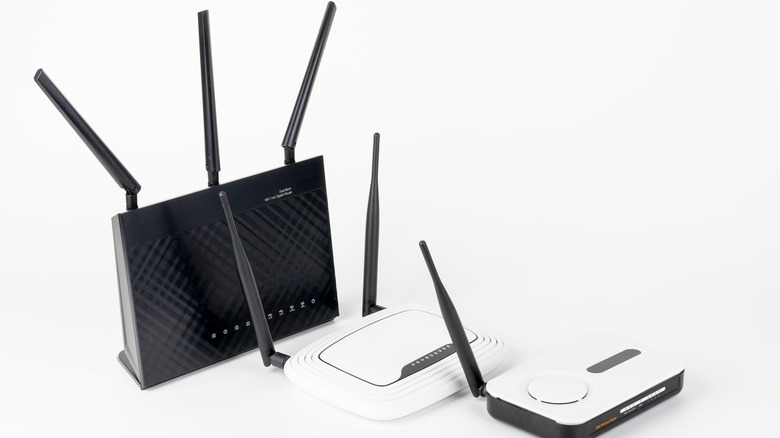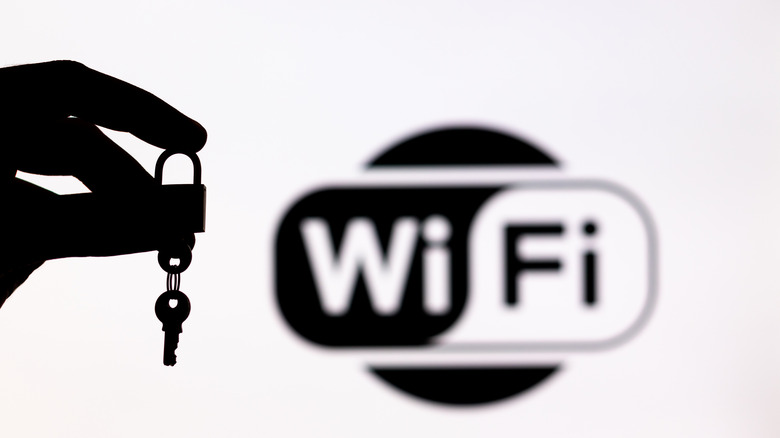WPA3 Vs. WPA2 Routers: What's The Difference?
With the rise of cyber-attacks and increasing concerns about data privacy, network security has become an essential aspect of everyone's daily lives. Wireless networks are particularly vulnerable to unauthorized access, making it crucial to secure them using robust security protocols. The Wi-Fi Protected Access 2 (WPA2) protocol has been the industry standard for securing wireless networks for many years. However, with new vulnerabilities and threats emerging, the Wi-Fi Alliance developed WPA3, an upgraded security protocol designed to improve the security of wireless networks.
WPA2 was introduced in 2004 and has been the most widely used wireless security protocol ever since. It uses the Advanced Encryption Standard (AES) algorithm to secure network traffic and provides a 256-bit encryption key. However, WPA2 is not without its vulnerabilities. In 2017, researchers discovered the Key Reinstallation Attack (KRACK) vulnerability, which allows attackers to intercept and manipulate data transmitted over the network. While router manufacturers and hardware companies have patched this, it highlights the importance of keeping routers and devices up-to-date with the latest security updates.
In response, the Wi-Fi Alliance developed WPA3, released in 2018. WPA3 provides more robust security and introduces several new features, making it more difficult for attackers to access the network. While WPA3 is a significant improvement over WPA2, it's important to note that not all devices support it. For example, older devices that do not support WPA3 may be unable to connect to a network that uses this protocol.
What is a WPA2 Router?
A WPA2 router is a wireless router that uses the WPA2 (Wi-Fi Protected Access 2) security protocol to secure the network. The Wi-Fi alliance introduced it in 2004 as an upgrade to the original WPA protocol, which had several security vulnerabilities. WPA2 quickly became the industry standard for securing wireless networks due to its use of the Advanced Encryption Standard (AES) algorithm, initially thought to be highly secure.
WPA2 also introduced the concept of a 256-bit encryption key, which made it nearly impossible for attackers to crack the encryption. WPA2 has been widely adopted and supported by most modern devices.
However, it has its drawbacks. One of the most significant vulnerabilities in WPA2 is the aforementioned Key Reinstallation Attack (KRACK) vulnerability. Another drawback of WPA2 is that it uses a single Pre-Shared Key (PSK) for all devices on the network. This feature means that if an attacker gains access to the PSK, they can use it to access the entire network. However, you can mitigate this vulnerability by using a strong password and regularly changing it.
What is a WPA3 router?
In a predictable act of succession, The Wi-Fi Alliance introduced Wi-Fi Protected Access 3 in 2018 as an upgrade to its predecessor. Routers enabled with WPA3 have the latest and most robust security protocol available for wireless networks. The new iteration patched several security vulnerabilities, including KRACK.
However, one of the significant improvements in WPA3 over WPA2 is the way it handles authentication. In WPA2, users enter a Pre-Shared Key to connect to the network, and this PSK is shared among all the devices on the Wi-Fi, making it vulnerable to brute-force attacks. In contrast, WPA3 uses individualized data encryption, which generates a unique encryption key for each device that connects to the network. This upgrade makes it more difficult for attackers to access your Wi-Fi, even if they manage to intercept the data transmission.
WPA3 also introduces forward secrecy, which ensures that if an attacker manages to compromise a user's key, they cannot use it to decrypt previously intercepted data, according to The Wi-Fi Alliance. This feature creates a unique key for each data transmission and discards it after use.
It's important to reiterate that not all devices support this protocol. Older devices that don't support WPA3 will be unable to connect to a network that uses this protocol. However, many new devices support WPA3, and network professionals expect it to become the new industry standard.
Which router is better for network security?
Network security has become top of mind for many internet users. Given how frequently people use their home networks for sensitive tasks like online shopping and healthcare appointments, ensuring your network is safe and secure is essential to keeping your personal information away from criminals.
Beefing up your security starts with your router's security protocol, and as mentioned earlier, they're not all created equal, unfortunately. While it has yet to be widely adopted by all hardware manufacturers, WPA3 is the superior option.
WPA3 uses Simultaneous Authentication of Equals instead of a Pre-Shared Key to authenticate devices on the network. This feature provides more robust security than WPA2's PSK, shared among all devices on the Wi-Fi. Additionally, as outlined before, WPA3 uses individualized data encryption, which generates a unique encryption key for each device that connects to the network.
It's also essential to note that upgrading to a WPA3 router isn't enough to ensure a wireless network's security. Users should also ensure that their devices are up-to-date with the latest security patches and use strong passwords. Additionally, network experts recommended that users disable Wi-Fi Protected Setup (WPS), a feature that allows users to connect to a network quickly but is vulnerable to brute-force attacks.
Which router is better for accessibility?
While WPA3 is the latest and most robust security protocol available for wireless networks, not all devices support it. This means users must consider accessibility when choosing between WPA2 and WPA3 routers.
WPA2 has been the industry standard for wireless network security for many years and is supported by most modern devices. This means users can expect minor accessibility issues when using this security protocol.
However, as manufacturers release more and more with WPA3 support, the accessibility argument for WPA2 is becoming less significant. For users who have only recently upgraded their devices, a WPA3 router may be the better option as it provides more robust security and is becoming more widely supported.
Ultimately, you should provide your home with the best possible security, and while WPA2 is still a good option, the industry is slowly shifting in favor of WPA3. Accessibility issues will always occur, but it's not worth sacrificing the peace of mind that your digital data is secure.




